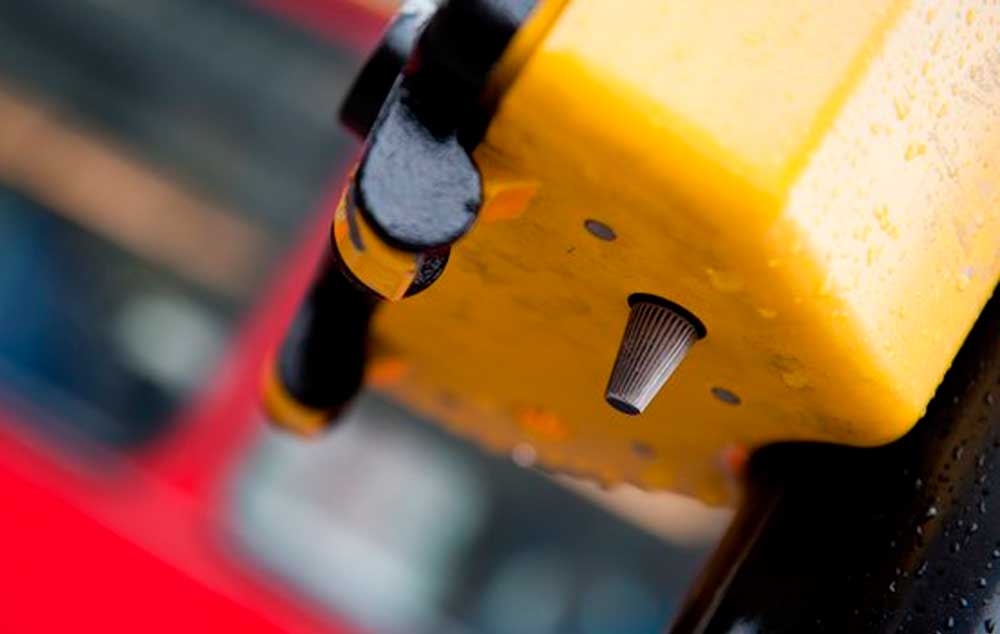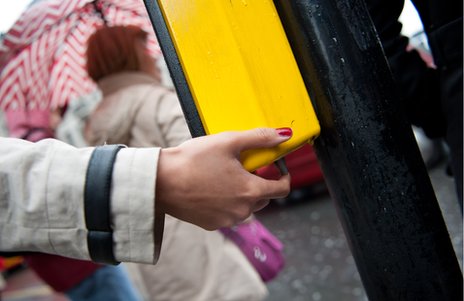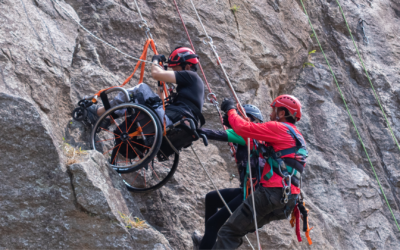
The secret button at pedestrian crossings. Additional aid for blind people.
Few seem to know about this useful little device, which is surprising because in many areas of the country it can be found on every street… and it saves lives.
What is it?
It’s a small, unassuming plastic or metal cone which you can find on the underside of pedestrian crossings.
When the green man lights up to show traffic should stop and it’s your turn to cross, the cone starts spinning. It points downwards and has tactile ridges on it.
What’s it doing there?
It’s there for those people who can’t see the lights, like visually impaired or blind people. When they feel it spinning they know they have the right of way.
When crossing a road you can stand near the control box with your hand on the cone and independently know you can cross when it spins, without having to get help from a passer-by, if there is one.
But I thought crossings beeped for blind people?
Not all crossings make sounds. For instance, if two crossings are close to each other neither will beep in case pedestrians are misled into walking out into oncoming traffic on the wrong road. And, in any case, a tactile indicator helps deaf-blind people too. They can’t hear audible signals. The cones provide the same information as the beeping signal but in tactile form. Some crossings both beep and rotate.
How do people use it?
Hugh Huddy is blind and works for visual impairment charities’ umbrella group Vision 2020. He says he is always pleased to see a cone on a crossing but wouldn’t just walk into a road because of a spinning mechanism: “An important point to make is that I wait for the cone to rotate but combine the information that it gives me with listening to the traffic on the road in front of me. You can hear whether they’re changing gear or slowing down.
“The cone isn’t telling you it’s safe to cross, it’s telling you the light is on. For instance, cyclists like whizzing through crossings sometimes, even though they shouldn’t.”
Do all crossings have cones?
No. Crossings are maintained by local authorities which are not legally obliged to make them accessible. The Department for Transport says it encourages their use, though, and says that all signal-controlled crossings can have them. This includes the ones with the attractive bird related names – pelicans, puffins, toucans – and also junction crossings.
Who invented them?
Nottingham University took the idea to the Department of Transport, as it was known then, in the 1980s. It wasn’t until 1989 that they began to appear on our streets. Interestingly, the cones still aren’t built into the boxes and have to be retro-fitted. Radix, the company behind the cones, says it has sold about 10,000 units per year since 1995.
What do I do with this information?
You could try it out for yourself. Do as blind people do and stand at the crossing with your hand jammed under the control box waiting for the cone to spin. Beware, in winter do it with gloves on, that metal control box can be freezing cold.
Information was provided by the Department for Transport and Royal National Institute of Blind People.
Source: Ouch!
Compartilhe
Use os ícones flutuantes na borda lateral esquerda desta página
Siga-nos!
Envolva-se em nosso conteúdo, seus comentários são bem-vindos!
Artigos relacionados
Teleton AACD. A pessoa com deficiência como protagonista.
Teleton AACD. A pessoa com deficiência como protagonista. Uma iniciativa internacional abraçada pelo SBT no Brasil.
Acessibilidade no ESG. Equipotel aborda o tema para o turismo.
Acessibilidade no ESG, para o mercado do turismo. Equipotel aborda a importância da inclusão da pessoa com deficiência.
Morte Sobre Rodas. Filme inclusivo foi candidato ao Oscar.
Morte Sobre Rodas. Dois protagonistas do filme, são pessoas com deficiência, um usuário de cadeira de rodas e outro com paralisia cerebral.







0 comentários